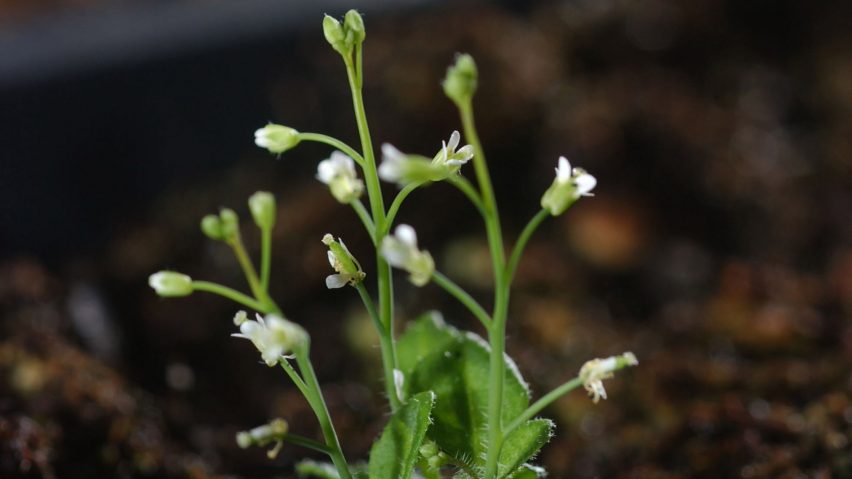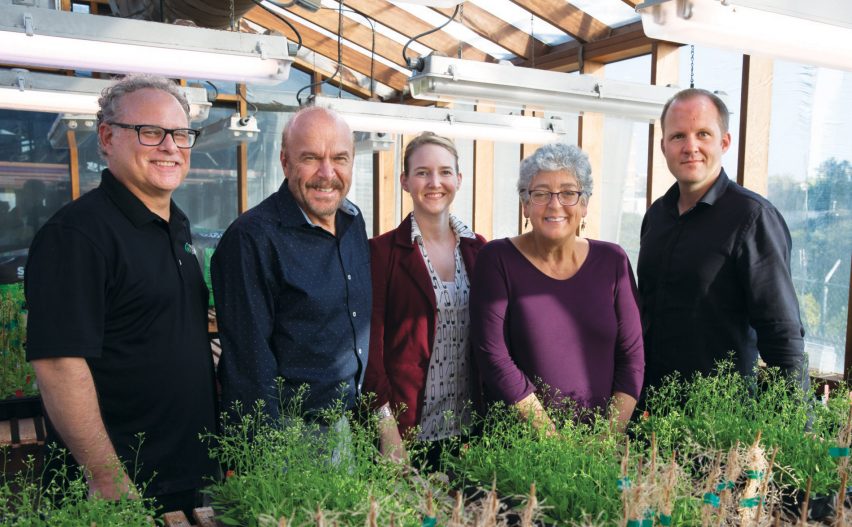
Salk Institute develops a plant that offers a solution to climate change
California's Salk Institute for Biological Studies is developing a plant that can store excess carbon dioxide in its roots, in a bid to curb the effects of climate change.
The Harnessing Plants Initiative aims to create plants with the ability to retain an increased amount of carbon in the soil once they decompose rather than returning it to the air – a process called carbon sequestration.
Implemented on a global scale, this could reduce the amount of carbon dioxide in the atmosphere, and with it reduce the warming of the earth.
Increased suberin results in larger roots
By influencing the genes that control root size and production of a substance called suberin, the team hope to create a plant with an expanded, more robust root system. This Ideal Plant, as they call it, would stockpile carbon in a form that resists decomposition, for optimum carbon storage in the ground.
Suberin is a naturally occurring plastic-like carbon polymer, commonly found in cork, melon rinds and potato skins, that regulates which natural elements are found in the roots of plants.
It resists decay, so the Salk team are looking to isolate its properties and establish the gene that affects its production, in order to encourage other plants to produce more of the substance. It has the added benefit of enriching soil and helping plants to resist stress.
Could reduce CO2 emissions by up to 46 per cent
Salk is testing the idea on arabidopsis, a plant similar to mustard cress, which reproduces quickly and produces identical seeds, making it useful for research purposes.
According to Salk, this plant-based approach to climate change has the potential to achieve a 20 to 46 per cent reduction in the excess carbon dioxide emissions produced each year by human activity.
They liken the project to "coaching plants to function at the level of Olympic athletes", pointing out that plants are already major drivers of the natural carbon cycle through photosynthesis.

The five professors working on the Ideal Plant hope to have a prototype within five years, and are looking to roll out the project on a large scale within a decade.
Carbon dioxide removal needed to combat global warming
Harnessing Plants is an example of carbon dioxide removal (CDR), one of a number of approaches being explored to combat global warming.
Methods of CDR fall broadly into three categories: storing carbon in the soil by planting more forests, pulling it out of the air mechanically or removing it at source, for example from factory chimneys, or burning biomass to capture the carbon dioxide for storage underground.
A report published by the Intergovernmental Panel on Climate Change (IPCC) last year stated that, alongside cutting emissions, carbon removal is an essential part of the puzzle to ensure that the global temperature increase remains below 1.5 degrees centigrade.
"Humanity faces an unprecedented threat caused by climate change and a burgeoning global population," said the Salk Institute. "To solve this imminent crisis, atmospheric CO2 levels must be decreased and agricultural production must be increased."
Could be used in commercial agriculture
Regular plants release a large amount of carbon dioxide into the atmosphere when they decompose in autumn. When a plant regrows, it uses the carbon dioxide in the atmosphere to produce food for growth, completing the carbon cycle.
By storing more carbon in the soil, the Ideal Plant has the potential to revolutionise agriculture.
Testing on the arabidopis plant model will commence later this year. If successful, the institute will begin testing on nine mainstream agricultural crops such as wheat, soybeans and corn.
Salk is already talking to seed companies about future implementation in commercial agriculture.
"The solution is scalable because it is based on widespread existing infrastructure and resources, and it advances sustainability because healthier soils and coastal aquatic regions will provide more resources to feed the world," said the institute.
Although CDR will help to curb climate change, many argue that we should focus our attentions on cutting the amount of carbon dioxide that we produce rather than providing alternative solutions.
Nonetheless, it is broadly agreed that CO2 removal will only work in conjunction with a reduction in our global output. Other proposals for tackling global warming include proposals to dim the sun, which scientists at Harvard are working on with the Stratospheric Controlled Perturbation Experiment.